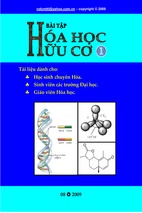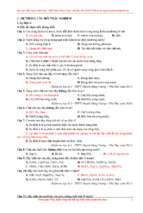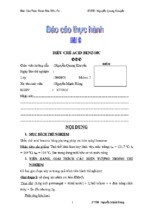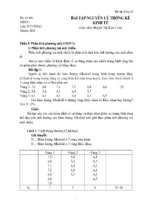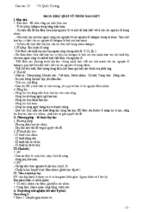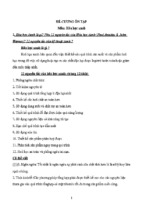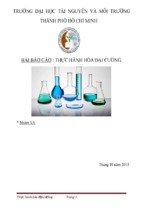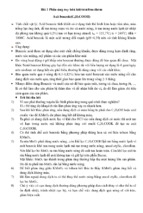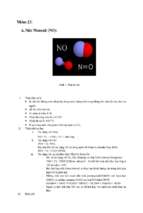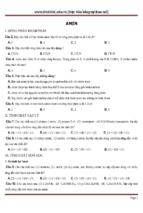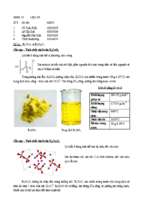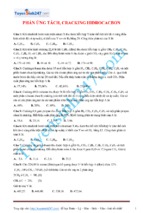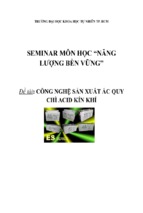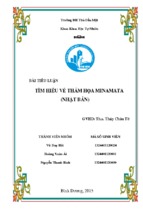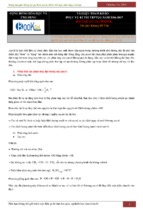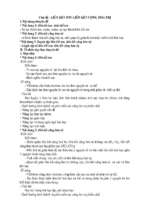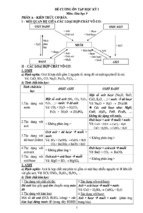Problem 1.1
(i)
1 ft = 0.305 m
(ii)
1 lbm = 0.454 kg
(iii)
1 lbf = 4.45 N
(iv)
1 HP = 746 W
(v)
1 psi = 6.9 kN m-2
(vi)
1 lb ft s-1 = 1.49 N s m-2
(vii)
1 poise = 0.1 N s m-2
(viii) 1 Btu = 1.056 kJ
(ix)
1 CHU = 2.79 kJ
(x)
1 Btu ft-2 h-1 oF-1 = 5.678 W m-2 K-1
Examples:
= 1 lbm of water through 1 oF
(viii) 1 Btu
= 453.6 g through 0.556 oC
= 252.2 cal
= (252.2)(4.1868)
= 1055.918 J = 1.056 kJ
-2
(x) 1 Btu ft h
-1 o -1
F
⎧
⎛ J ⎞⎫ ⎧
−3 ⎛ m ⎞ ⎫
= ⎨1 Btu x 1.056 x 10 3 ⎜
⎟⎬ x ⎨1 ft x 12 x 25.4 x 10 ⎜ ⎟⎬
⎝ Btu ⎠⎭ ⎩
⎝ ft ⎠⎭
⎩
−1
⎧ o
⎛ o C ⎞⎫
⎧
⎛ s ⎞⎫
x ⎨1 h x 3600 ⎜ ⎟⎬ x ⎨1 F x 0.556 ⎜⎜ o ⎟⎟⎬
⎝ h ⎠⎭
⎩
⎝ F ⎠⎭
⎩
−1
= 5.678 W m-2 oC-1
= 5.678 W m-2 K-1
Problem 1.2
W2, t1
T2
W1, T1
t2
−2
Variables, M:
1. Duty, heat transferred, Q
2. Exchanger area, A
3. Overall coefficient, U
4. Hot-side flow-rate, W1
5. Cold-side flow-rate, W2
6. Hot-side inlet temperature, T1
7. Hot-side outlet temperature, T2
8. Cold-side inlet temperature, t1
9. Cold-side outlet temperature, t2
Total variables = 9
Design relationships, N:
1. General equation for heat transfer across a surface
Q = UAΔTm
(Equation 12.1)
Where ΔTm is the LMTD given by equation (12.4)
2. Hot stream heat capacity Q = W1C p (T1 − T2 )
3. Cold stream heat capacity Q = W2 C p (t 2 − t1 )
4. U is a function of the stream flow-rates and temperatures (see Chapter 12)
Total design relationships = 4
So, degrees of freedom = M – N = 9 – 4 = 5
Problem 1.3
Number of components, C = 3
Degrees of freedom for a process stream = C + 2 (see Page 17)
Variables:
Streams
4(C + 2)
Separator pressure
1
Separator temperature
1
Total
4C + 10
Relationships:
Material balances
C
v-l-e relationships
C
l-l-e relationships
C
Equilibrium relationships
6
Total
3C + 6
Degrees of freedom = (4C + 10) – (3C + 6) = C + 4
For C = 3, degrees of freedom = 7
The feed stream conditions are fixed which fixes C + 2 variables and so the design
variables to be decided = 7 – 5 = 2.
Choose temperature and pressure.
Note: temperature and pressure taken as the same for all streams.
Problem 1.4
h
Volume = l 2 x h = 8 m3
l
l
(i)
Open Top
Area of plate
= l 2 + 4lh
= l 2 + 4l x 8l −2
Objective function
= l 2 + 32l −1
Differentiate and equate to zero:
0 = 2l − 3l −2
l = 3 16 = 2.52 m
(ii)
i.e. h =
Closed Top
The minimum area will obviusly be given by a cube, l = h
l
2
Proof:
Area of plate
= 2l 2 + 4lh
Objective function
= 2l 2 + 32l −1
Differentiate and equate to zero:
0 = 4l − 3l −2
l=3 8 =2m
h=
8
=2m
22
Problems 1.5 and 1.6
Insulation problem, spread-sheet solution
All calculations are peformed per m2 area
Heat loss
= (U)(temp. diff.)(sec. in a year)
Savings
= (heat saved)(cost of fuel)
Insulation Costs
Thickness
U
(mm)
-2
= (thickness)(cost per cu. m)(capital charge)
Heat Loss
Increment
Extra Cost
(Wm C )
(MJ)
Savings (£)
Insulation (£)
0
2.00
345.60
20.74
25
0.90
155.52
11.40
0.26
50
0.70
120.96
2.07
0.26
100
0.30
51.84
4.15
0.53
150
0.25
43.20
0.52
0.53
200
0.20
34.56
0.52
0.53
250
0.15
25.92
0.52
0.53
-1
Data: cost of fuel 0.6p/MJ
av. temp. diff. 10oC
200 heating days per year
cost of insulation £70/m3
capital charges 15% per year
(Optimum)
American version:
Thickness
U
Heat Loss
Increment
Extra Cost
(mm)
(Wm-2C-1)
(MJ/yr)
0
2.00
518.40
45.66
25
0.90
233.28
25.66
0.6
50
0.70
181.44
4.66
0.6
100
0.30
77.76
9.33
1.2
150
0.25
64.80
1.17
1.2
200
0.20
51.84
1.17
1.2
250
0.15
38.88
1.17
1.2
Savings ($/m2) Insulation ($/m2)
(Optimum)
Data: cost of fuel 0.6 cents/MJ
av. temp. diff. 12oC
250 heating days per year
cost of insulation $120/m3
capital charges 20% per year
Problem 1.7
The optimum shape will be that having the lowest surface to volume ratio.
A sphere would be impractical to live in an so a hemisphere would be used.
The Inuit build their snow igloos in a roughly hemispherical shape.
Another factor that determines the shape of an igloo is the method of construction.
Any cross-section is in the shape of an arch; the optimum shape to use for a material
that is weak in tension but strong in compression.
Problem 1.8
1.
THE NEED
Define the objective:
a) purging with inert gas, as requested by the Chief Engineer
b) safety on shut down
2.
DATA
Look at the process, operation, units, flammability of materials, flash points
and explosive limits.
Read the report of the incident at the similar plat, if available. Search literature
for other similar incidents.
Visit sites and discuss the problem and solutions.
Determine volume and rate of purging needed.
Collect data on possible purging systems.
Discuss with vendors of such
systems.
3.
GENERATION OF POSSIBLE DESIGNS
Types of purge gase used: Argon, helium, combustion gases (CO2 + H2O),
nitrogen and steam.
Need to consider: cost, availability, reliability, effectiveness.
Helium and argon are rejected on grounds of costs and need not be considered.
a) Combustion gases: widely used for purging, use oil or natural gas,
equipment readily available: consider.
b) Nitrogen: used in process industry, available as liquid in tankers or
generated on site: consider.
c) Steam: used for small vessels but unlikely to be suitable for a plant of this
size: reject.
4.
EVALUATION:
Compare combustion gases versus nitrogen.
• Cost
Cost of nitrogen (Table 6.5) 6p/m3
Cost of combustion gases will depend on the fuel used. Calculations are based
on natural gas (methane).
2CH4 + 3O2 + (3x4)N2 → 2CO2 + 4H2O + 12N2
So, 1 m3 of methane produces 7 m3 of inert combustion gases (water will be
condensed).
Cost of natural gas (Table 6.5) 0.4p/MJ. Typical calorific value is 40 MJ/m3.
Therefore, cost per m3 = 0.4 x 40 = 16p.
Cost per m3 of inert gases = 16/7 = 2.3p.
So, the use of natural gas to generate inert gas for purging could be
significantly cheaper than purchasing nitrogen. The cost of the generation
equipment is not likely to be high.
• Availability
Natural gas and nitrogen should be readily available, unless the site is remote.
• Reliability
Nitrogen, from storage, is likely to be more reliable than the generation of the
purge gas by combustion. The excess air in combustion needs to be strictly
controlled.
• Effectiveness
Nitrogen will be more effective than combustion gases. Combustion gases
will always contain a small amount of oxygen. In addition, the combustion
gases will need to be dried thoroughly and compressed.
5.
FINAL DESIGN RECOMMENDATION
Use nitrogen for the large scale purging of hazardous process plant.
Compare the economics of generation on site with the purchase of liquid
nitrogen.
Generation on site would use gaseous storage, under pressure.
Purchase would use liquid storage and vapourisation.
Solution 2.1
Basis for calculation: 100 kmol dry gas
CO + 0.5O2 → CO2
Reactions:
H2 + 0.5O2 → H2O
CH4 + 2O2 → CO2 + 2H2O
C2H6 + 3.5O2 → 2CO2 + 3H2O
C6H6 + 7.5O2 → 6CO2 + 3H2O
REACTANTS
Nat. Gas
O2
PRODUCTS
CO2
H2O
CO2
4
CO
16
8
H2
50
25
CH4
15
30
15
30
C2H6
3
10.5
6
9
C6H6
2
15
12
6
N2
10
Totals
100
N2
4
16
50
10
88.5
53
95
If Air is N2:O2 = 79:21
N2 with combustion air
= 88.5 x 79/21 = 332.9 kmol
Excess O2
= 88.5 x 0.2
Excess N2
=17.7 x 79/21 = 66.6 kmol
Total
= 17.7 kmol
= 417.2 kmol
(i)
Air for combustion = 417.2 + 88.5 = 505.7 kmol
(ii)
Flue Gas produced = 53 + 95 + 10 + 417.2 = 575.2 kmol
(iii)
Flue Gas analysis (dry basis):
N2
409.5 kmol
85.3 mol %
CO2
53.0 kmol
11.0 mol %
O2
17.7 kmol
3.7 mol %
480.2 kmol
100.0 mol %
10
Solution 2.2
Use air as the tie substance – not absorbed.
H2O
0.05 % NH3
200 m3 s-1
760 mm Hg
20oC
5 % NH3
H2O
NH3
Partial volume of air = 200(1 - 0.05) = 190 m3 s-1
Let the volume of NH3 leaving the column be x, then:
0.05
x
=
100 190 + x
0.05(190 + x) = 100x
x=
9.5
= 0.0950 m3 s-1
(100 − 0.05)
(a) The volume of NH3 adsorbed
= (200)(0.05) – 0.0950
= 9.905 m3 s-1
If 1 kmol of gas occupies 22.4 m3 at 760 mm Hg and 0oC,
273
⎛ 9.905 ⎞
Molar Flow = ⎜
= 0.412 kmol s-1
⎟
+
22
.
4
(
273
20
)
⎝
⎠
Mass Flow = (0.412)(17) = 7.00 kg s-1
(b) Flow rate of gas leaving column = 190 + 0.0950 = 190.1 m3 s-1
(c) Let the water flow rate be W, then:
1
7.00
=
100 W + 7.00
W = 700 – 7 = 693 kg s-1
Solution 2.3
OFF-GAS
REFORMER
3
-1
2000 m h
2 bara
35oC
H2 + CO2 + unreacted HC’s
At low pressures vol% = mol%
(a) Basis: 1 kmol of off-gas
Component
mol%
M. M.
mass (kg)
CH4
77.5
16
12.40
C2H6
9.5
30
2.85
C3H8
8.5
44
3.74
C4H10
4.5
58
2.61
Σ 21.60
So the average molecular mass = 21.6 kg kmol-1
(b) At STP, 1 kmol occupies 22.4 m3
5
⎛ 2000 ⎞⎛ 2 x 10 ⎞ 273
⎟
= 156.248 kmol h-1
Flow rate of gas feed = ⎜
⎟⎜⎜
5 ⎟
⎝ 22.4 ⎠⎝ 1.013 x 10 ⎠ (273 + 35)
Mass flow rate
= (156.248)(21.60) = 3375 kg h-1
(c) Basis: 100 kmol of feed
Reaction (1): CnH2n+2 + n(H2O) → n(CO) + (2n + 1)H2
Component
n
Amount
CO
H2
CH4
1
77.5
77.5
232.5
C2H6
2
9.5
19.0
47.5
C3H8
3
8.5
25.5
59.5
C4H10
4
4.5
18.0
40.5
Σ 140.0
If the conversion is 96%, then:
380.0
H2 produced = (380.0)(0.96) = 364.8 kmol
CO produced = (140.0)(0.96) = 134.4 kmol
Reaction (2): CO + H2O → CO2 + H2
If the conversion is 92%, then: H2 from CO = (134.4)(0.92) = 123.65 kmol
Total H2 produced = 364.8 + 123.65 = 488.45 kmol/100 kmol feed
If the gas feed flow rate = 156.25 kmol h-1, then
⎛ 488.45 ⎞
-1
-1
H2 produced = 156.25⎜
⎟ = 763.20 kmol h ≡ (763.2)(2) = 1526 kg h
⎝ 100 ⎠
Solution 2.4
ROH
(Yield = 90 %)
RCl
ROR
(Conversion = 97 %)
Basis: 1000 kg RCl feed
Relative molecular masses:
CH2=CH-CH2Cl
76.5
CH2=CH-CH2OH
58.0
(CH2=CH-CH2)2O
98.0
RCl feed
=
1000
76.5
= 13.072 kmol
RCl converted = (13.072)(0.97)
= 12.68 kmol
ROH produced = (12.68)(0.9)
= 11.41 kmol
ROR produced = 12.68 – 11.41
= 1.27 kmol
Mass of allyl-alcohol produced
= (11.41)(58.0) = 661.8 kg
Mass of di-ally ether produced
= (1.27)(98.0) = 124.5 kg
Solution 2.5
Basis: 100 kmol nitrobenzene feed.
The conversion of nitrobenzene is 96% and so 100(1 - 0.96) = 4 kmol are unreacted.
The yield to aniline is 95% and so aniline produced = (100)(0.95) = 95 kmol
Therefore, the balance is to cyclo-hexalymine = 96 – 95 = 1 kmol
From the reaction equations:
C6H5NO2 + 3H2 → C6H5NH2 + 2H2O
1 mol of aniline requires 3 mol of H2
C6H5NO2 + 6H2 → C6H11NH2 + 2H2O
1 mol of cyclo-hexalymine requires 6 mol of H2
Therefore, H2 required for the reactions = (95)(3) + (1)(6) = 291 kmol
A purge must be taken from the recycle stream to maintain the inerts below 5%. At
steady-state conditions:
Flow of inerts in fresh H2 feed = Loss of inerts from purge stream
Let the purge flow be x kmol and the purge composition be 5% inerts.
Fresh H2 feed = H2 reacted + H2 lost in purge
= 291 + (1 – 0.05)x
Inerts in the feed at 0.005 mol fraction (0.5%)
= (291 + 0.95 x )
0.005
1 − 0.005
= 1.462 + 4.774 x 10-3x
Inerts lost in purge = 0.05x
So, equating these quantities: 0.05x = 1.462 + 4.774 x 10-3x
Therefore: x = 32.33 kmol
The purge rate is 32.33 kmol per 100 kmol nitrobenzene feed.
H2 lost in the purge = 32.33(1 – 0.05) = 30.71 kmol
Total H2 feed = 291 + 30.71 = 321.71 kmol
Therefore: Total feed including inerts =
321.71
= 323.33 kmol
1 − 0.005
(c) Composition at the reactor outlet:
Stoichiometric H2 for aniline = 285 kmol
H2 feed to the reactor = (285)(3) = 855 kmol
Fresh feed H2 = 323.33 and so Recycle H2 = 855 – 323.33 = 531.67 kmol
Inerts in Fresh Feed = (323.33)(0.005) = 1.617 kmol
⎛ 0.05 ⎞
Inerts in Recycle (at 5%) = 536.08 ⎜
⎟ = 27.983 kmol
⎝ 1 − 0.05 ⎠
Therefore, total inerts = 1.617 + 27.983 = 29.600 kmol
Aniline produced = 95 kmol
Cyclo-hexalymine produced = 1 kmol
If 291 kmol of H2 are reacted, then H2 leaving the reactor = 855 – 291 = 564 kmol
H2O produced = (95)(2) + (1)(2) = 192 kmol
Composition:
kmol
mol %
Aniline
95
10.73
Cyclo-hexalymine
1
0.11
H2O
192
21.68
H2
564
63.69
Inerts
29.60
3.34
4
0.45
885.6
100.00
Nitrobenzene
Solution 2.6
AN
Cyclo
H2O
H2
Inerts
NB
950
10
1920
5640
300
40
H2
5640
Inerts 300
Pressure 20 psig = 1.38 barg
Temp. = 270oC
Assumptions: H2 and inerts are not condensed within the condenser.
Temp. of the gas at the condenser outlet = 50oC and return the cooling water at 30oC
(20oC temp. difference).
Antoine coefficients: Aniline
16.6748, 3857.52, -73.15
Nitrobenzene
16.1484, 4032.66, -71.81
H2O
18.3036, 3816.44, -46.13
Vapour pressures at 50oC:
ln( P o ) = 18.3036 −
H2O:
3816.44
323 − 46.13
Po = 91.78 mm Hg = 0.122 bar
P
ln( P o ) = 16.6748 −
Aniline:
(From Steam Tables = 0.123 bar)
3857.52
323 − 73.15
Po = 3.44 mm Hg = 0.00459 bar
P
Nitrobenzene: ln( P o ) = 16.1484 −
4032.66
323 − 71.81
Po = 1.10 mm Hg = 0.00147 bar
P
NB. The cyclo-hexalymine is ignored because it is present in such a small quantity.
Mol fraction =
partial pressure
total pressure
If the total pressure is 2.38 bara
H2O
=
0.122
= 0.0513
2.38
AN
=
0.00459
= 0.0019 = 0.19 %
2.38
NB
=
0.00147
= 0.00062 = 0.06 %
2.38
Total
= 5.13 %
5.38 %
Take H2 and the inerts as tie materials.
Flow (H2 and inerts) = 5640 + 300 = 5940 kmol
Mol fraction (H2 and inerts) = 100 – 5.38 = 94.62 %
⎛
⎞
mol fraction other
⎟⎟ flow (H 2 + inerts)
Flow of other components = ⎜⎜
mol
fraction
(H
+
inerts)
2
⎝
⎠
H2O
=
5.13
x 5940 = 322.0 kmol
94.53
AN
=
0.19
x 5940 = 11.9 kmol
94.53
NB
=
0.06
x 5940 = 3.8 kmol
94.53
Composition of the gas stream (recycle):
kmol
vol %
H2
5640
89.84
Inerts
300
4.78
H2O
322.0
5.13
AN
11.9
0.19
NB
3.8
0.06
Cycl.
Trace
--
Total
6277.7
100.00
Composition of the liquid phase:
Liquid Flow = Flow In – Flow in Gas Phase
kmol
kg
vol %
w/v %
H2
0
--
--
--
Inerts
0
--
--
--
H2O
1920 - 322
1598
28764
61.9
23.7
AN
950 – 11.9
938.1
87243
36.3
71.8
NB
40 – 3.8
36.2
4453
1.4
3.7
10
990
0.4
0.8
121,450
100.0
100.0
Cycl.
Total
2582.3
This calculation ignores the solubility of nitrobenzene in the condensed aniline in the
recycle gas.
Note: H2O in the recycle gas would go through the reactor unreacted and would add to
the tie H2O in the reactor outlet. But, as the recycle gas depends on the vapour pressure
(i.e. the outlet temp.) it remains as calculated.
The required flows of nitrobenzene and aniline are therefore:
Inlet Stream:
kmol
vol %
AN
950
10.34
Cycl.
10
0.11
2242
24.42
NB
40
0.44
H2
5640
61.42
Inerts
300
3.27
9182
100.00
H2O
1920 + 322
Total
An iterative calculation could be performed but it is not worthwhile.
Solution 2.7
Basis: 100 kg feed
AQUEOUS
H20
AN
NB
Cycl
23.8
72.2
3.2
0.8
30oC
100.0
ORGANIC
Minor components such as nitrobenzene and aniline will be neglected in the preliminary
balance.
Let the flow rate of aqueous stream be F kg per 100 kg of feed.
Flow rate of aniline and H2O = 72.2 + 23.8 = 96.0 kg
Balance of aniline:
IN
OUT
= 72.2 kg
3.2
= 0.032F
100
Aqueous stream
=Fx
Organic stream
⎛ 5.15 ⎞
= (96 − F )⎜1 −
⎟ = 96 – 4.94 – F + 0.0515F
100 ⎠
⎝
Equating:
72.2 = 91.06 – F(1 – 0.0835)
F = 20.6 kg
Organic stream = 96 – 20.6 = 75.4 kg
Nitrobenzene:
Since the partition coefficient Corganic/Cwater = 300 more nitrobenzene leaves the decanter
in the organic phase. Only a trace (≈ 3.2/300 = 0.011 kg, 11g) leaves in the aqueous
phase.
Cyclo-hexylamine:
From the given solubilities, the distribution of cyclo-hexylamine is as follows:
⎛ 0.12 ⎞
Aqueous phase = 20.6 ⎜
⎟
⎝ 100 ⎠
= 0.03 kg
⎛ 1 ⎞
Organic phase = 75.4 ⎜
⎟
⎝ 100 ⎠
= 0.75 kg
0.78 kg
(near enough)
From the solubility data for aniline and water:
Aqueous phase
⎛ 5.15 ⎞
Aniline = 20.6 ⎜
⎟ = 1.1 kg
⎝ 100 ⎠
H2O = 20.6 – 1.1 = 19.5 kg
Organic phase
⎛ 3 .2 ⎞
H2O = 75.4 ⎜
⎟ = 2.4 kg
⎝ 100 ⎠
Aniline = 75.4 – 2.4 = 73.0 kg
H20 19.5
AN
1.1
NB
Trace
Cycl
0.8
AQUEOUS
H20
AN
NB
Cycl
23.8
72.2
3.2
0.8
100.0
ORGANIC
H20
AN
NB
Cycl
2.4
73.0
3.2
Trace
Therefore, the H2O and aniline flows need to be adjusted to balance. However, in this
case it is probably not worth iterating.
Solution 2.8
Calculation of the feed mol fractions:
w/w
MW
mol/100 kg h-1
mol %
H2O
2.4
18
13.3
14.1
AN
73.0
93
78.5
83.2
NB
3.2
123
2.6
2.7
Aniline in feed = 83.2 kmol h-1
With 99.9 % recovery, aniline on overheads = (83.2)(0.999) = 83.12 kmol h-1
Overhead composition will be near the azeotrope and so an aniline composition of 95 %
is suggested.
(NB: Would need an infinitely tall column to reach the azeotrope composition)
Water composition in overheads = 100 – 95 = 5 mol %
⎛ 5 ⎞
So water carried over with the aniline = 83.12 ⎜ ⎟ = 4.37 kmol h-1
⎝ 95 ⎠
Water leaving the column base = 14.1 – 4.37 = 9.73 kmol h-1
kmol h-1
mol %
AN
83.12
95.0
H2O
4.37
5.0
NB
Trace
Compositions:
TOPS
BOTTOMS
87.49
100.0
AN
0.08
0.64
H2O
9.73
77.78
NB
2.70
21.55
12.51
99.97
Solution 3.1
= ΔPν =
Energy
ΔP
ρ
=
(100 − 3)
x 105
850
= 11,412 J kg-1
⎛ J ⎞⎛ kg ⎞
= ⎜⎜ ⎟⎟⎜ ⎟
⎝ kg ⎠⎝ s ⎠
Power
⎛ 1000 ⎞
= 11,412 ⎜
⎟
⎝ 3600 ⎠
= 3170 W
Solution 3.2
200oC
ΔHevap
ΔHvap
ΔHliq
0oC
100
ΔH liq =
100
∫ (4.2 − 2 x 10 t )dt =
−3
0
2
⎡
−3 t ⎤
t
4
.
2
2
x
10
−
⎢
⎥
2⎦
0⎣
= 420 – 10
= 410 kJ kg-1
ΔH evap = 40,683 J mol-1
=
(From Appendix D)
40683
= 2260 kJ kg-1
18
From Appendix O, the specific heat of the vapour is given by:
Cp = 32.243 + 19.238 x 10-4T +10.555 x 10-6 T 2 – 3.596 x 10-9 T 3
Where Cp is in J mol-1 K-1 and T is in K. Now 100oC = 273.15K and 200oC =373.15K.
373.15
ΔH vap =
∫ (32.243 + 19.238 x 10
273.15
−4
T + 10.555 x 10 −6 T 2 − 3.596 x 10 −9 T 3 )dT
- Xem thêm -

